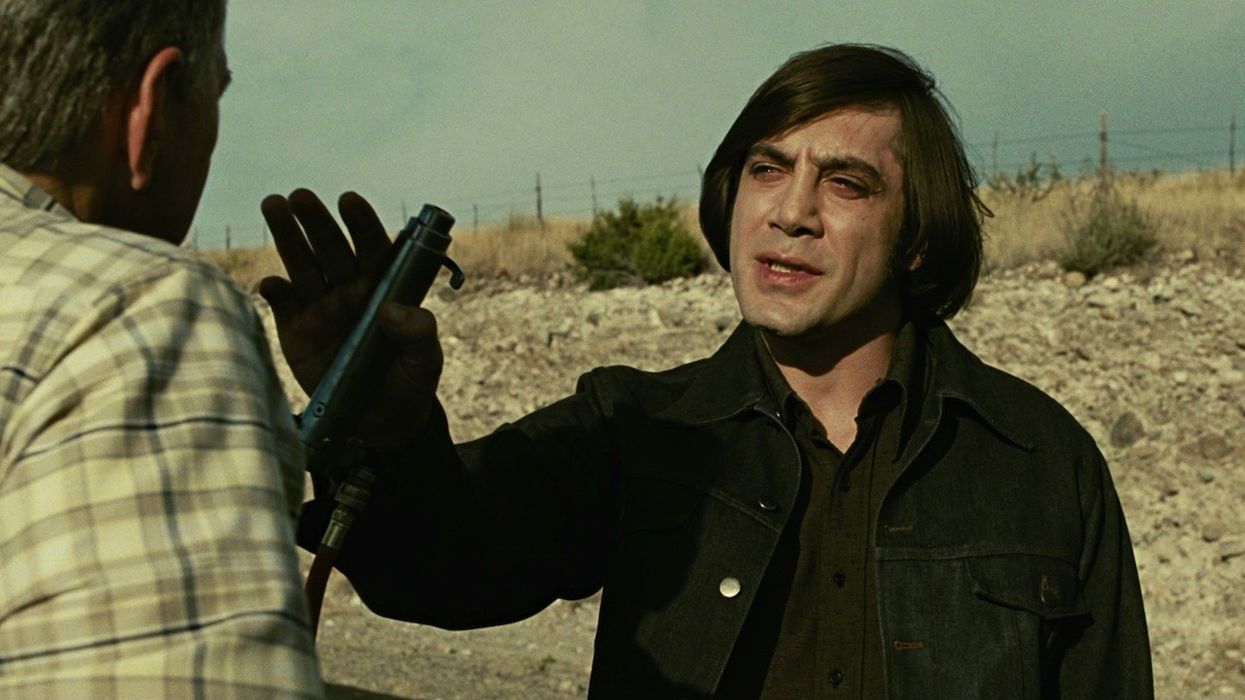Watch: How 'No Country for Old Men' Successfully Defies Narrative Expectation
'No Country for Old Men' forces the viewer to create meaning for themselves.

At the beginning of his latest video, Michael Tucker of Lessons from the Screenplay quotes a Ted Talk by Andrew Stanton, the writer/director behind Toy Story and WALL-E. During the talk, Stanton discusses what he calls his "Unifying Theory of 2+2," which states that a successful storyteller, rather than spoon-feeding information to the audience, makes them put things together for themselves.
In other words, "Don't give them four, give them two plus two...If you construct your story correctly, it compels the audience to conclude the answer is four." In the video below, Tucker looks at No Country for Old Men and shows this principle of showing rather than telling, in the way the movie handles character development, as well as plot and theme.
Choice Equals Character
The three main characters in the film, Llewelyn Moss, Anton Chigurh, and Sheriff Bell, are revealed to the audience not through what they say, but how they say it (or often what they don't say). This is illustrated at the beginning of the film when we meet Moss, who is out hunting and discovers money that will drive the plot forward (at least superficially). While the fact that he ends up taking the money reveals that he is the sort of person who will, in Tucker's words, "risk his life for money," it's the particulars of how he handles the situation that show us the kind of person he is. He is "calm and methodical...we can conclude that he is no stranger to life and death situations."
Moss's nemesis, Anton Chigurh, is an iconic character not only because of his striking aesthetic but because of the way he goes about his murderous business. Like countless movie hitmen, it's obvious that he has "no problem taking human life in order to achieve his goals." This alone, though, doesn't make him disturbing.
Rather than using dialogue or other heavy-handed tactics to convey information, the film demonstrates excellent storytelling principles when it trusts the audience to put two and two together.
Instead, "It's how he kills people that makes him so frightening. The first murder we see is careful, violent and powerful, but the second is polite and clean. His apathetic attitude and his disturbing efficacy suggest a long history of taking life [so that] we don't need any backstory." Rather than using dialogue or other heavy-handed tactics to convey information, the film demonstrates excellent storytelling principles (and exemplifies Stanton's theory) when it trusts the audience to put two and two together.
Defying Narrative Expectation
No Country for Old Men is, like many Coen Brothers movies, a genre film that purposely confounds genre expectations. Tucker quotes Ethan Coen, who said that "The convention is ingrained that the good guy is going to meet the bad guy and they're going to confront each other." Indeed, for most of the film No Country follows a traditional narrative structure, leading us to believe that a showdown between Moss and Chigurh is on the way.
However, this is precisely what doesn't happen. Not only is Moss killed off-screen, but, in Tucker's words, it's not even "at the hands of the film's main antagonist." This abrupt turn, he says, "is one of the puzzle pieces we're given to synthesize the moral of the story." The other puzzle piece is given at the beginning by Sheriff Bell, during the opening monologue when he muses on the senselessness of contemporary violence.
"The convention is ingrained that the good guy is going to meet the bad guy and they're going to confront each other."—Ethan Coen
Source: Lessons from the Screenplay











